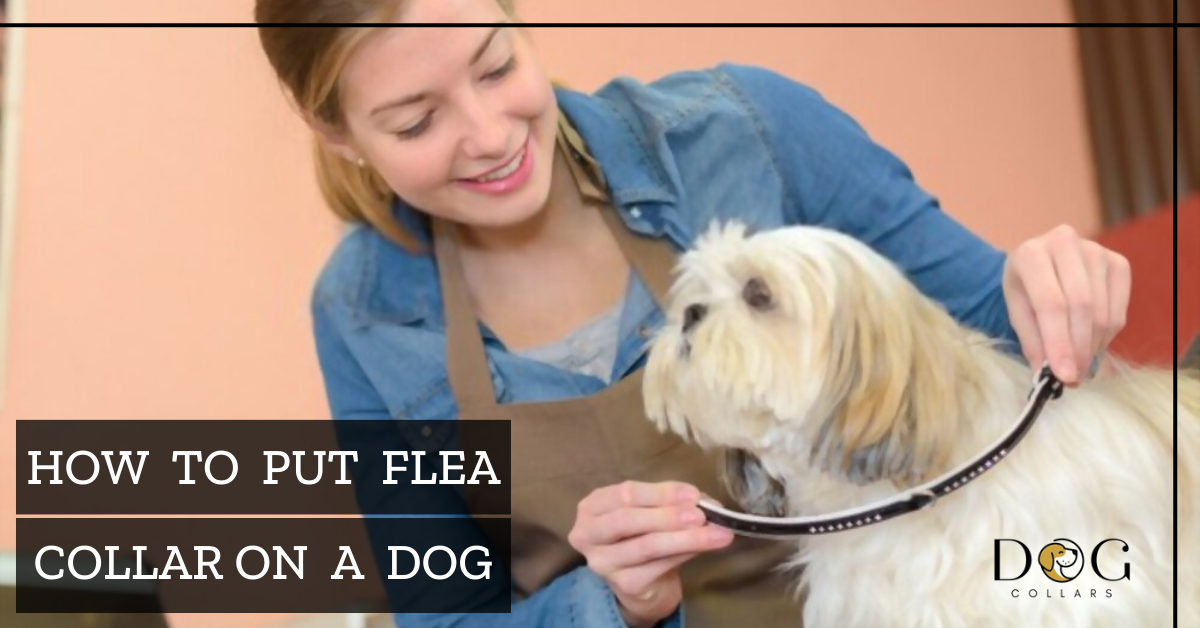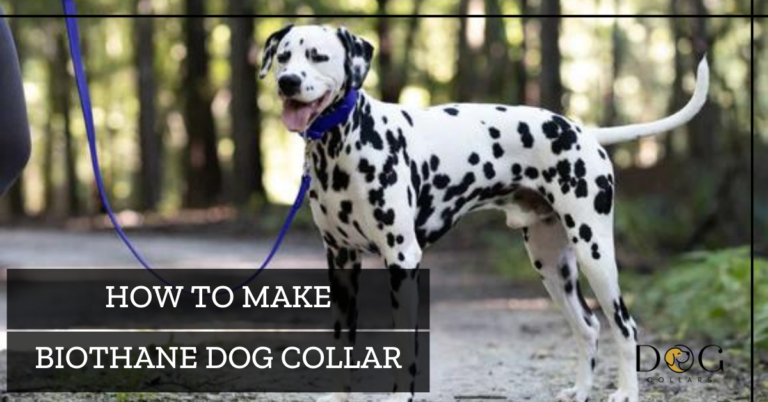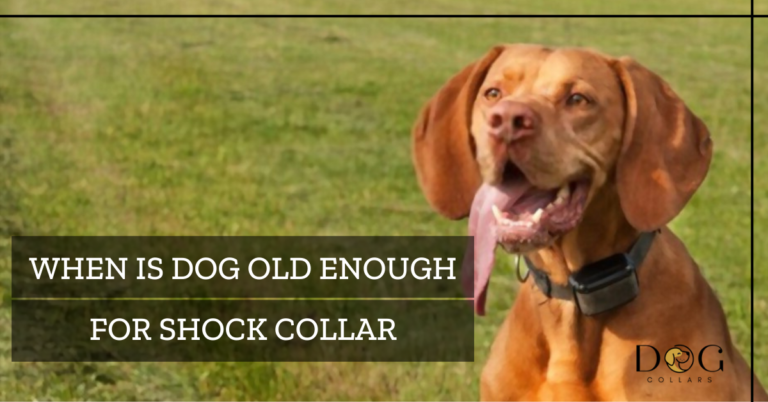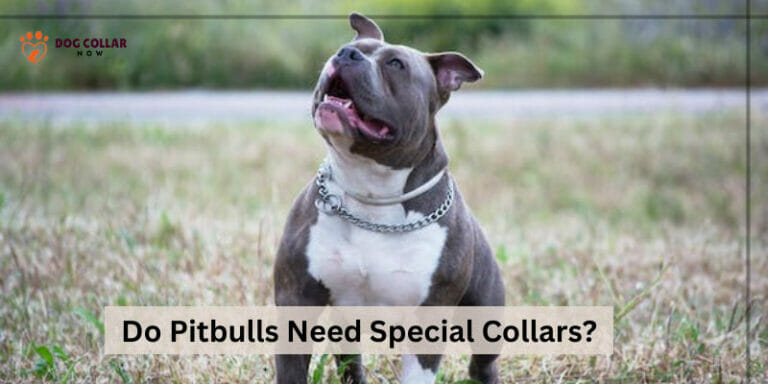How To Put A Flea Collar On A Dog – 9 Steps Guide

Hey there! As a dog owner, I know that pesky fleas can be a real pain for our furry friends. That’s why it’s important to take preventative measures, like using a flea collar.
At first, I was nervous about putting the flea collar on my dog correctly. However, I quickly learned that the key is to make sure the collar is snug but not too tight and to trim any excess length to prevent my dog from chewing on it. With a bit of trial and error, I got the hang of it and now it’s a quick and easy process.
Say goodbye to pesky fleas – we’ll walk you through step-by-step how to put a flea collar on a dog to keep them safe and protected from harmful parasites.
How To Put A Flea Collar On A Dog (Step-By-Step Guide)
Here are the full instructions for putting a tick collar on a dog:
- Choose the Right Flea Collar Size for Your Dog:
If you’re planning to put a pest band on your furry friend, the first thing you need to do is pick the right size collar. Don’t worry, it’s easy! Pest collars come in different sizes, so you’ll need to choose the one that fits your dog just right. That way, they’ll be comfortable and protected against those pesky fleas.
- Read the Instructions on the Flea Collar Packaging:
Listen up! Before you put that flea collar on your furry pal, make sure to read the instructions on the packaging carefully. Trust me, it’s important! Those instructions will give you all the deets you need to know about how to use the collar the right way. So don’t skip this step, it’s for your pup’s well-being!
- Prepare the Collar:
Okay, pup parents! Now it’s time to get that flea collar ready for action. Take it out of the package and unroll it, but hold up! Some parasite collars need a little extra prep before use. You might have to stretch it or let it breathe for a bit, but don’t worry! Just follow the instructions on the packaging, and you’ll have your furry buddy flea-free in no time!
- Put The Collar On The Dog:
Alright, let’s get your furry friend looking stylish with their new flea pendant! Here’s what you need to do: place the pendant around your dog’s neck and adjust the buckle until it feels just right. You should be able to slip two fingers between the collar and your dog’s neck. And hey, don’t forget to double-check the instructions from the manufacturer to make sure you’ve got the perfect fit!
- Trim Any Excess Length:
Hey there, just a heads up! If the flea tag looks a bit too long for your puppy’s neck, it’s totally fine. You can trim off any extra length, but be sure to leave enough space for the collar to move around comfortably. You don’t want it dragging on the ground or getting caught on things, so just use your best judgement!
- Check the Fit:
Alright, let’s talk about flea bands! It’s important to make sure that the band fits your pup just right – not too loose, not too tight. You want it snug enough to do its job but not so tight that it’s uncomfortable. And hey, don’t forget to check the fit every so often to make sure it’s still just right!
- Monitor Your Dog for Adverse Reactions:
Once you’ve got the flea band on your pup, keep an eye on them for any signs of an allergic reaction or other issues. If you notice them scratching a lot or getting a rash, take off the collar right away and get in touch with your vet. It’s always better to be safe than sorry!
- Check Your Dog for Fleas and Ticks:
Hey, just a quick reminder! Even if your pup is wearing a flea band, it’s still important to check them over for parasites every now and then. The collar is great, but it’s not a superhero – some pesky biting insects might still try to sneak their way onto your dog’s fur. So be sure to give your furry friend a good check-up every once in a while!
- Follow the Manufacturer’s Recommendations for Reapplying or Replacing the Collar:
Hey, just a quick heads up about bug collars! They all have different lifespans, so it’s important to follow the manufacturer’s instructions for how often to replace or reapply the collar. This will help keep your pup protected from parasites year-round!
By following these instructions, you can help ensure that your dog receives the full benefits of the bug collar while minimising any potential risks or side effects.
How Effective Are Tick Collars For Dogs?
I’ve been using a Seresto tick collar for my dog for a while now, and I’ve noticed a significant decrease in the number of ticks she picks up during our outdoor adventures. It’s definitely worth considering if you want to keep your pup protected from those pesky little critters!
When you put a Seresto collar on your furry friend, it emits Imidacloprid and Flumethrin chemicals that can either repel or kill fleas and other larvae, mosquitoes that might try to hitch a ride on your dog.
The two ingredients work together to protect your pet from fleas and ticks. So you can rest easy knowing that your pet is protected and won’t be bringing any unwanted guests into your home!
What to Do If Your Puppy or Dog Has Fleas
If you’re a dog owner, dealing with fleas is just one of those things that can happen. But don’t worry, there are plenty of things you can do to help your furry friend get back to their happy, healthy self!
First things first, make sure to give your dog a good bath with flea shampoo. This will help kill any fleas that are currently on your dog’s fur. Next, you’ll want to thoroughly vacuum your home, including any areas where your dog likes to hang out. This will help get rid of any fleas and their eggs that may be lurking in your carpets and furniture.
If your dog’s flea infestation is particularly bad, you may need to consider using a flea tag or spot-on treatment. These products can be very effective in preventing future flea infestations, but it’s important to talk to your vet first to make sure you’re using the right product for your pet.
Dealing with fleas can be frustrating, but with a little bit of effort and some helpful products, you can get your dog back to feeling happy and healthy in no time!
Criticism Against Flea Collar
There are several criticisms against using flea bands on dogs, including:
- Chemical Exposure:
- Some anti-bug collars contain chemicals that can be harmful to both dogs and humans. These chemicals can cause skin irritation, respiratory problems, and other health issues. Additionally, if a child or another pet ingests the collar or chews on it, it could be toxic.
- Ineffectiveness:
- Parasite collars are not 100% effective at preventing bugs. Some parasites may still attach themselves to the dog’s fur, and the collar may not be able to kill them all.
- Risk of Strangulation:
- If the parasite collar is too loose or too long, it can become caught on something and cause the dog to choke or strangle. This is particularly true for puppies and small dogs.
- Risk of Allergic Reactions:
- Some dogs may have an allergic reaction to the bug collar or the chemicals in it, which can cause itching, redness, and other skin irritations.
- Environmental Concerns:
- Some bug collars contain chemicals that can leach into the environment and harm other animals or plants.
Did you know that some products out there can be pretty risky because they contain insecticides that are super dangerous? Yup, you gotta watch out for stuff like tetrachlorvinphos, carbaryl, and propoxur.
It is important for pet owners to carefully consider the potential risks and benefits of using a parasite collar on their dog, and to consult with their veterinarian if they have any concerns. Additionally, pet owners should always follow the manufacturer’s instructions for using and disposing of bug collars.
Symptoms of Flea and Tick Collar Poisoning in Dogs
Some signs to watch for include vomiting, diarrhoea, lethargy, lack of appetite, and seizures. pesky parasites for up to 8 months. However, it is important to keep an eye out for any symptoms of poisoning that may arise from wearing these collars.
If you notice any of these symptoms, it is important to seek veterinary care immediately. To protect your dog, always follow the instructions on the collar packaging and remove the collar if your pet displays any adverse reactions. Keeping an eye on your pet’s health will help you keep them safe and healthy.
Risks of Using Pest Protection Products
As a dog owner, I’m concerned about the safety of the flea and tick products I use on my furry friend. I recently read that watchdog groups like NRDC have criticised the government for not having enough safety standards for these products. That’s pretty scary!
Here are some points on the risks of using pest protection products:
- Health Risks: Pesticides can cause skin irritation, respiratory problems, and even death.
- Environmental Risks: Pesticides can contaminate soil and water sources and harm non-target species.
- Resistance: Overuse of pesticides can lead to pest populations developing resistance.
- Misuse: Improper use can result in unintended consequences such as accidental poisoning.
- Legal Risks: Misuse can result in fines, lawsuits, and criminal charges.
(Note: According to NRDC senior scientist Miriam Rotkin-Ellman, even some vets don’t have the full story on these products. They rely on the EPA to make sure the products on the market are safe if used correctly. But it turns out that the active ingredients in these products can actually be quite dangerous, especially if used regularly. This is particularly concerning for pregnant women and children.)
I don’t know about you, but as a dog owner, my pup’s safety is my top priority. It’s important to be informed about the risks of flea and tick products and to make sure we’re using them as safely as possible.
Conclusions
Frequently Asked Questions
How do you put an anti-flea collar on a dog?
To put an anti-pest collar on your dog, slip it over their head and adjust it so it fits snugly around their neck, leaving enough space for two fingers. Follow the instructions carefully and monitor your dog for any signs of irritation or allergic reactions. Regularly check your dog for signs of dog fleas and flea eggs.
Does the flea collar go above or below the collar?
The placement of a pest collar on a dog, above or below the regular collar, is a matter of personal preference. Ensure that properly place the collar around your dog’s neck the bug collar fits snugly and comfortably around the neck of your dog, regardless of placement. Regularly check the dog for fleas, even when wearing a parasite collar.
Can dogs sleep with flea collars?
Yes, dogs can sleep with insecticide collars, but check the instructions as some may need to be removed during sleep. Monitor the behaviour of your pet and remove the collar if you notice any unusual symptoms or behaviour. Consult your veterinarian if you have any concerns.
Do flea collars work if they already have fleas?
Bug collars can be effective in preventing flea infestations in dogs, but they may not work as well if the dog already has fleas. In such cases, it’s best to use a combination of flea control methods, including flea shampoos, sprays, and oral medications, along with regular cleaning of the dog’s bedding and surroundings.
Is it safe to touch a flea collar?
It is generally safe to touch a parasite collar as a dog owner, but it’s important to wash your hands thoroughly with soap and water afterward to avoid any potential irritation or harmful effects from the chemicals in the collar. Additionally, avoid touching your face or mouth before washing your hands to prevent accidental ingestion of any residue left on your hands.
What are the disadvantages of flea collars?
Bug collars have some disadvantages, such as the potential for skin irritation or allergic reactions, the release of chemicals that could harm pets or people, and the limited effectiveness against fleas in certain situations.






